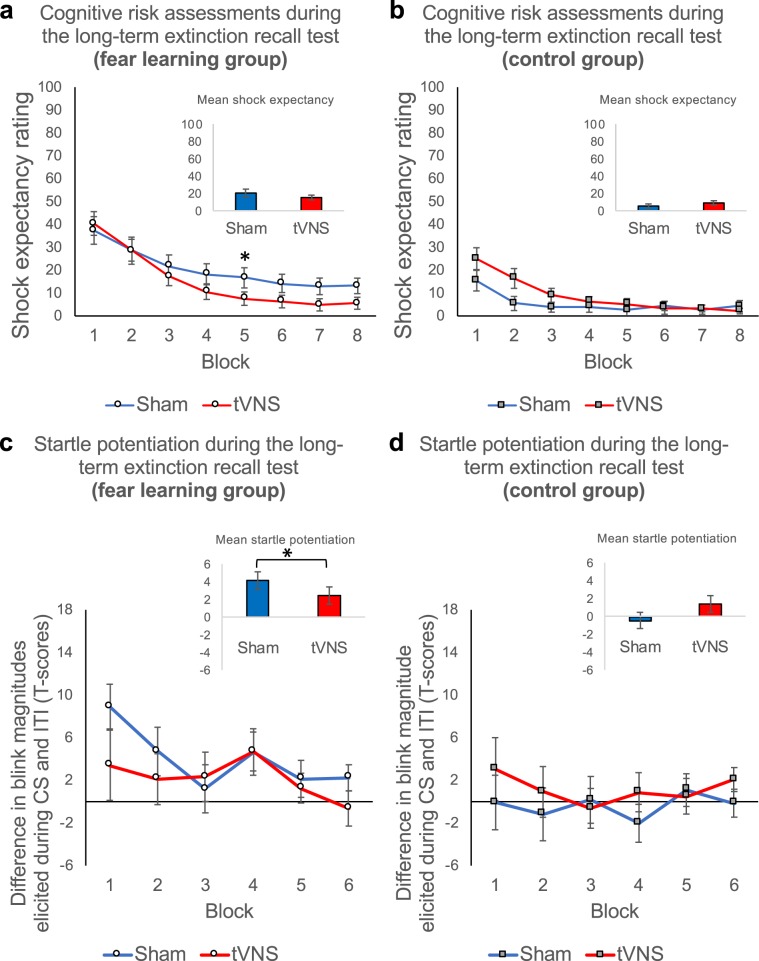Figure 7.
TVNS-paired extinction facilitates long-term recall of fear extinction memory (28 days after the subsequent extinction test). Upper Panel (a and b): Mean shock expectancy ratings averaged across blocks of two long-term extinction recall test trials for the sham stimulation (blue) and tVNS condition (red) in the fear learning group (a: left) and in the control group (b: right). Error bars represent SEM. Fear learning group participants who underwent extinction training under tVNS showed accelerated long-term extinction recall extinction 28 days after the subsequent extinction test, indicated by a stronger decrease in shock expectancy ratings in the tVNS relative to the sham condition (see a). No such effect was observed in the control group (see b). Lower Panel (c and d): Mean startle potentiation (standardized (T-scores) blink magnitudes elicited during the CS minus standardized (T-scores) blink magnitudes elicited during the inter-trial intervals) averaged across two probe stimuli presented during the long-term extinction recall test. Potentiation scores are presented for the sham stimulation (blue) and the tVNS condition (red) in the fear learning group (c: left) and the control group (d: right). Again, error bars represent SEM. Fear learning group participants who underwent extinction training under tVNS showed accelerated long-term extinction recall extinction 28 days after the subsequent extinction test, indicated by a stronger decrease in fear potentiated startle responses in the tVNS relative to the sham condition (see a). No such effect was observed in the control group (see b).

